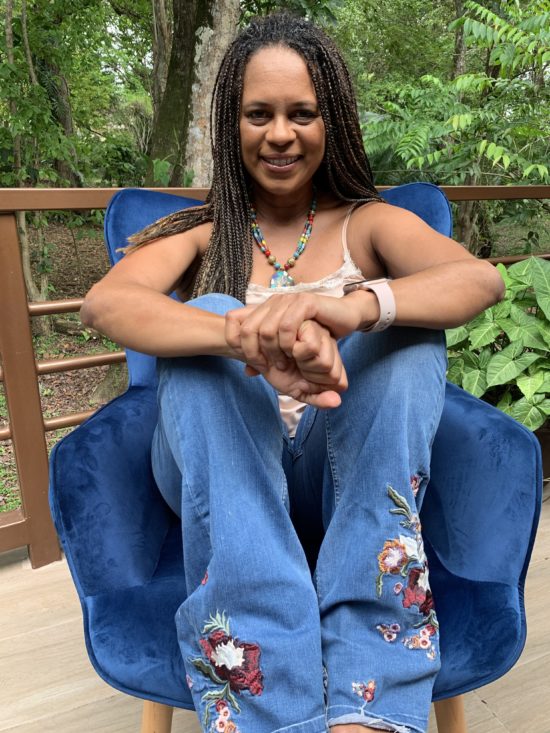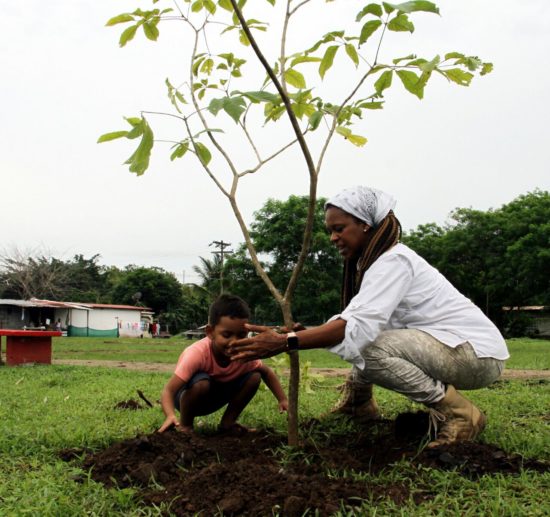Raisa Banfield is an environmental activist, architect, and leading advocate for sustainable urbanization. She received the 2021 Global Ties U.S. IVLP Alumni Decade of Social Innovation and Change Award for her commitment to sustainable urbanization and environmental education. We spoke with Raisa about receiving the award, her background in architecture, and how environmental activism has influenced her career.
Raisa’s IVLP was organized by IIE, in partnership with the New Orleans Citizen Diplomacy Council, Global Ties Detroit, the International Institute of Wisconsin, Northern Nevada International Center, and the World Affairs Council – Seattle.

You are an architect by profession and an environmental activist. How does being an architect inform your work as an environmental activist, and how does being an environmental activist shape your work as architect and urban planner?
Being an architect has influenced all of my work. It teaches you to understand the components of a whole from its conception, and it also teaches you how to see the whole from its parts. From the beginning, I understood the problem of forest degradation in my community, and then, was able to recognize it in my country. It influenced my conception to better understand development. Forests and natural resources are not isolated entities of development, but an essential part of it. Transmitting this knowledge from experience became my great challenge as an environmental activist and for many, a great contradiction as an architect.
For many of my colleagues, being an architect means using nature according to the work you’re doing. For me, more and more every day, it is understanding nature as part of the whole, of the work, of the city; therefore without it, there is no real development.
During your time as Vice Mayor, you helped launch the first sustainable plan for Panama City. Can you discuss what that means and why it is important?
Coordinating Panama’s first city plan was a great challenge, not only as a professional, but also as a citizen who, for years, had demanded the city’s need for someone to better plan out the disorderly growth — which was, at the time, far from being sustainable. It was also difficult, being my first experience in public management and incipient municipal decentralization process. Panama City is the most important city in the country of Panama, and one of the most important cities in the Latin American region, all amid the challenges of climate adaptation. This process was laying the foundations of what I had hoped was a path of no return, towards sustainability.
In 2010, you produced the documentary “Our Planet.” How did you become involved with that project? More broadly, what do you see as the role of popular entertainment in environmental education?
In the first decade of the 2000s, it was still uncommon to see movements of citizens defending the environment in Panama. In effect until that moment, it was a role exclusive of scientists and experts, but not of the public domain.
When our movement to defend urban forests and the Panama Canal basin emerged, it was a media phenomenon. The Foundation for Education in Television, FETV Channel 5, identified a space to communicate and educate on this subject. They invited me – claiming that I had a talent for communicating both the simple, and the complicated – to be part of the program Caring for Planet 3, later, through my Sustainable Panama Foundation, we produced Nuestro Planeta, not only for Channel 5, but also for another commercial mass media, Positioning itself for several years as the only environmental education program in Panama.
Today, I return to that commitment of communication and the visibility of sustainable alternatives, with the communication platform Connection Earth, under construction, to continue with my mission of connecting people with nature and environmentally cautious actions for their protection.

How did your International Visitor Leadership Program (IVLP) shape your work in Panama?
My IVLP allowed me to confirm that I was not alone in my aspirations to achieve a greater and better connection between political decisions, community actions, and the application of knowledge in activities that impacted the environment. It allowed me to learn, through various North American cities and through the experiences shared with colleagues from other parts of the world, that it was possible to change the development model, including greater citizen participation and collaboration between the different actions.
I returned to my country motivated, inspired, and willing, from my non-governmental space at that time, to do what was necessary to promote said actions.
What was the response from your community after you received the IVLP Alumni Decade of Social Innovation and Change Award and gave your speech at the Global Ties U.S. National Meeting?
It was very gratifying because when congratulating me, many people told me, “Nobody is a prophet in their land,” and that for Global Ties U.S. to recognize my contribution in this effort filled them with pride. The recognition came at a time when we are once again, at the crossroads of starting the economy, while ignoring the need for environmental protection.
The words of John Kerry at the recognition event are a new boost to move forward with the commitment to promote actions to ensure that Panamanian development is in tune with the urgent challenges of global climate adaptation.
What advice do you have for people who want to get involved in environmental activism, but are not sure where to start?
In Spanish, we have a phrase that says: “A swallow doesn’t make a summer,” but I always add: “but it does announce it.” By this I mean, we should never think that what we can do on a personal level is insufficient, much less, think that it is too little to try to influence others with our example. Above all, we must raise our voices to join so many others in the world who are already making a difference; we must believe that it is possible to change the relationship we have with our “common home,” not only because it is possible, but it is necessary. The planet is not the one that is in danger, but rather, it is the survival of the human species. So let’s be that swallow that announces that summer, because together in the world we are already a flock.
